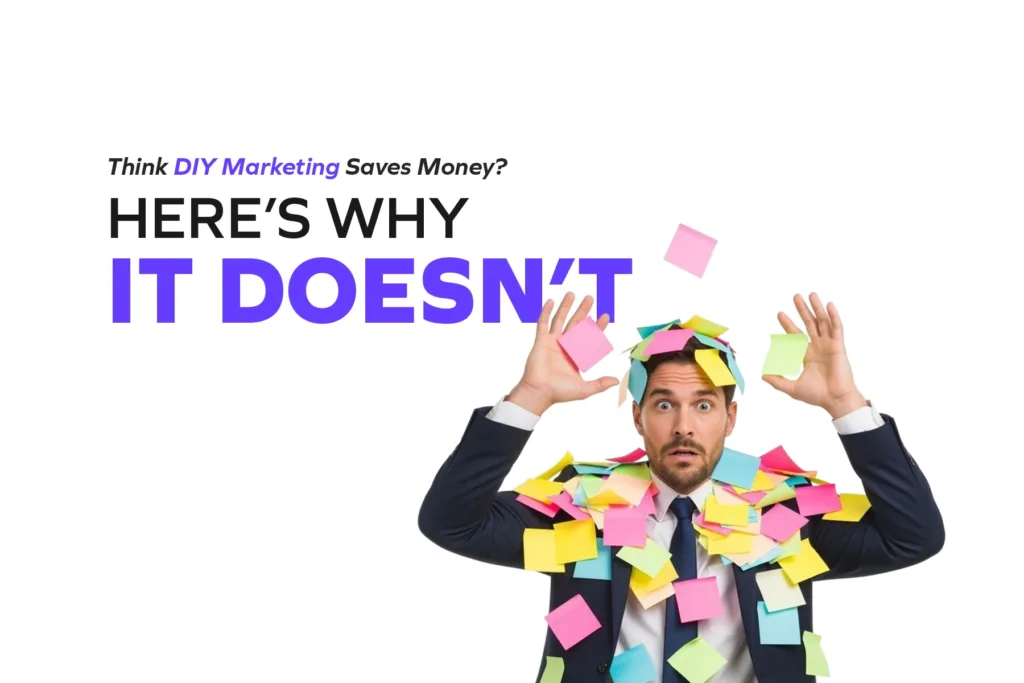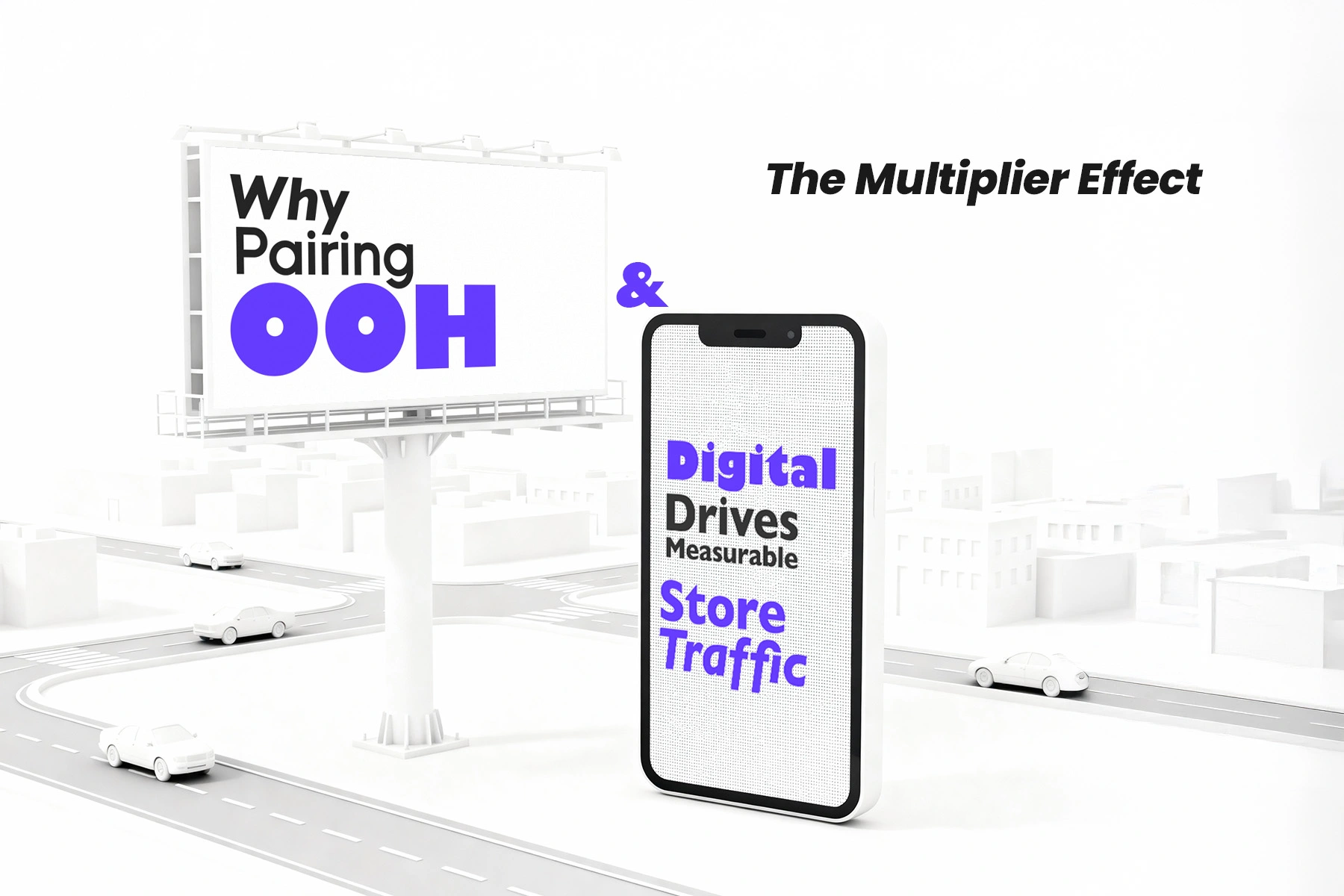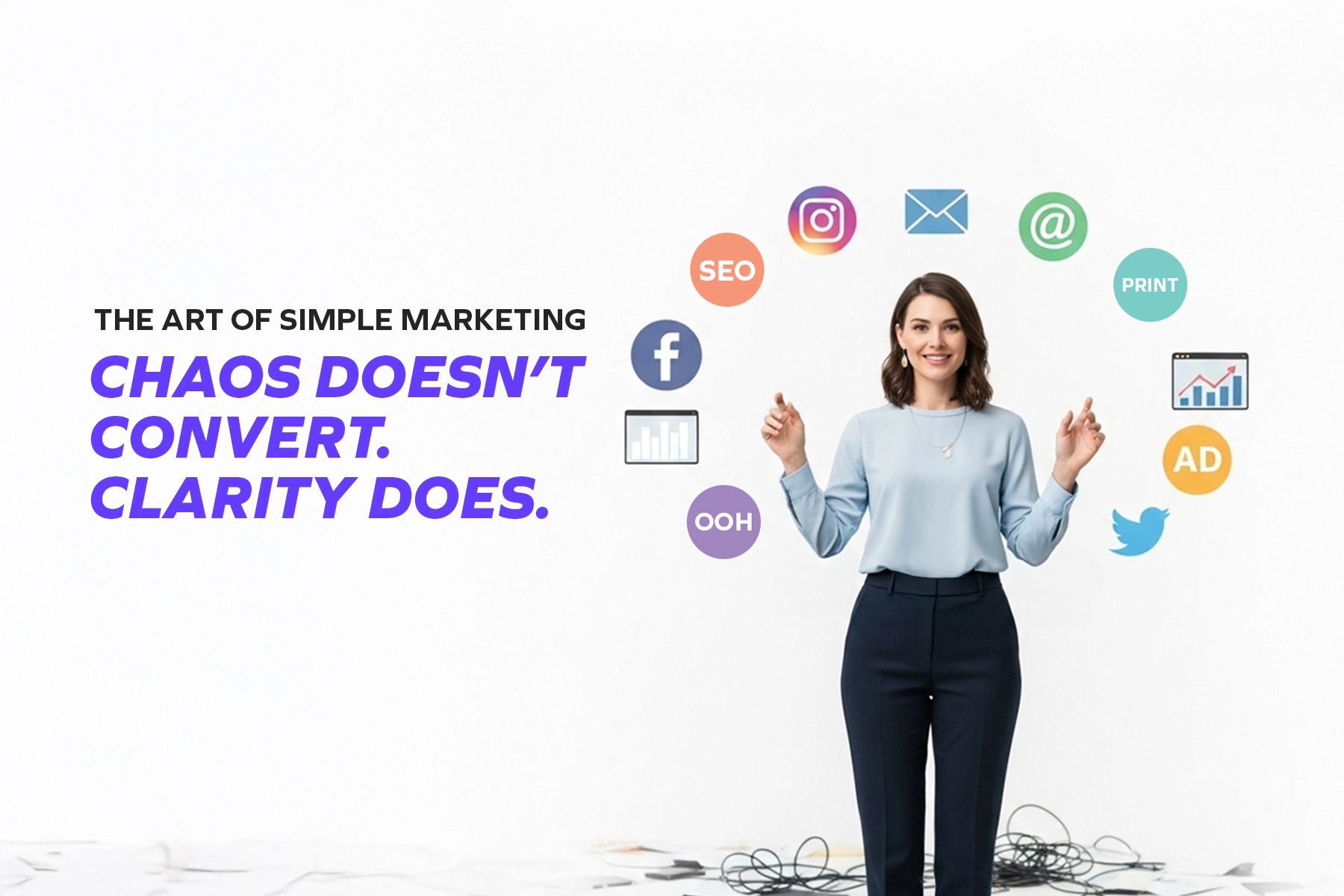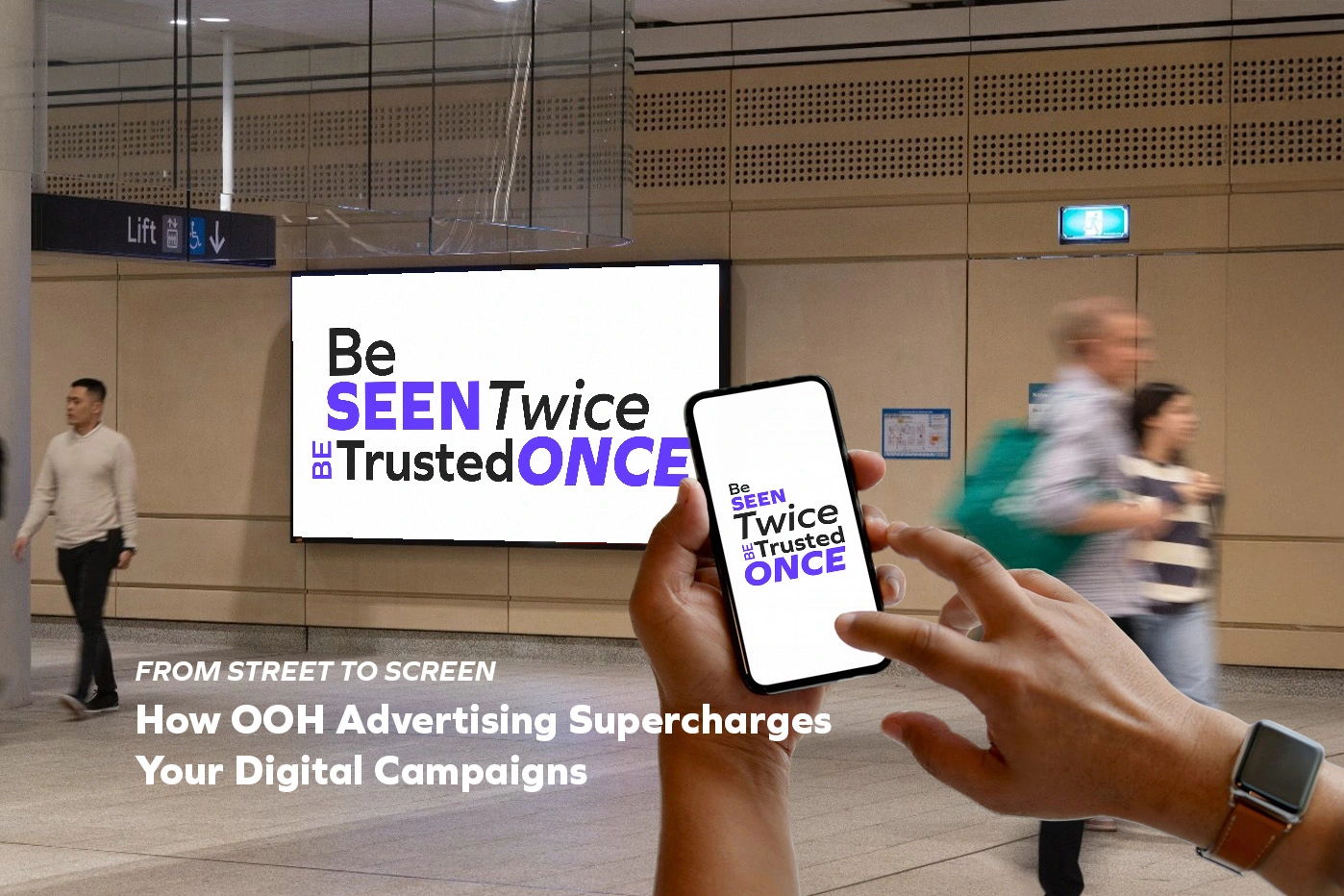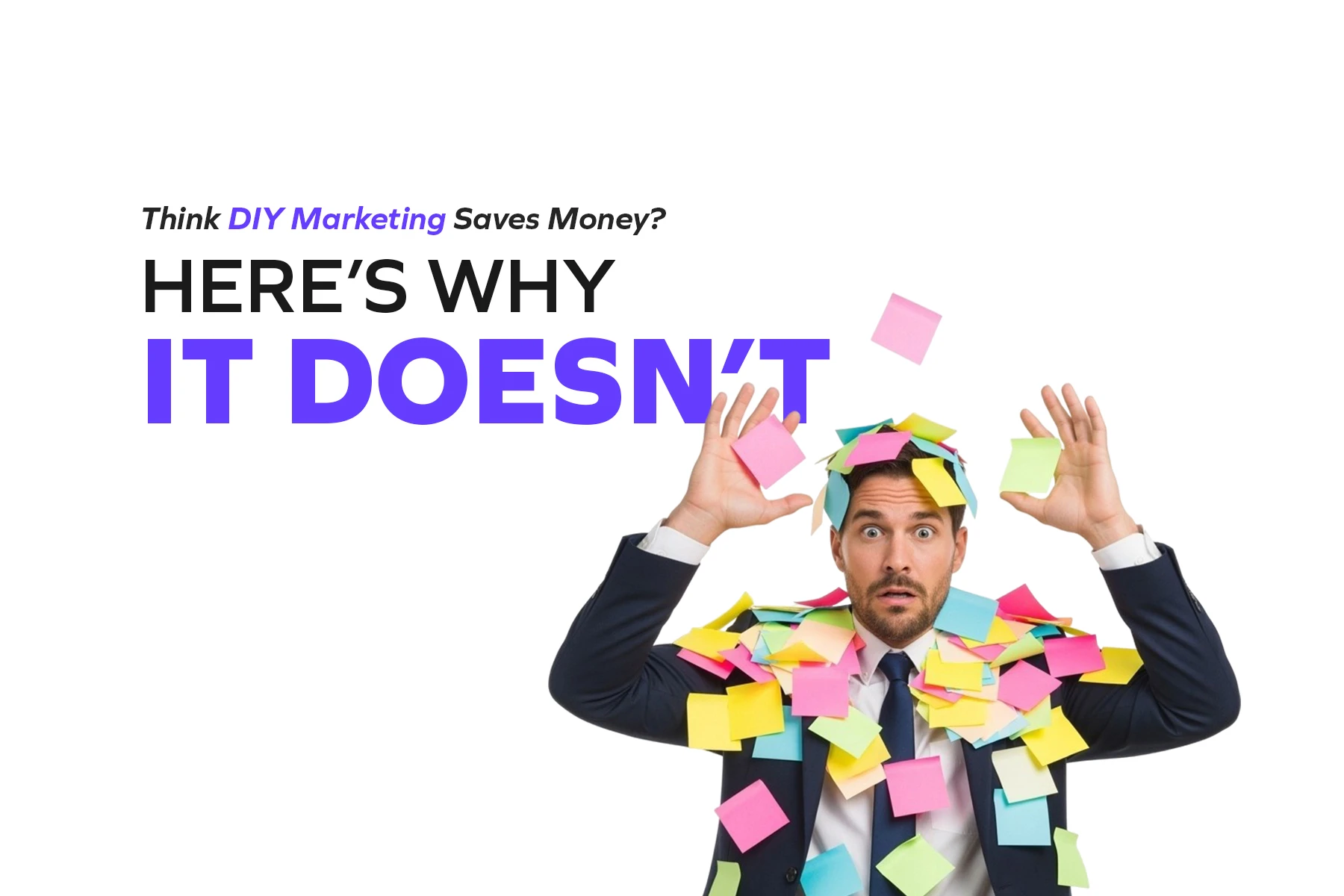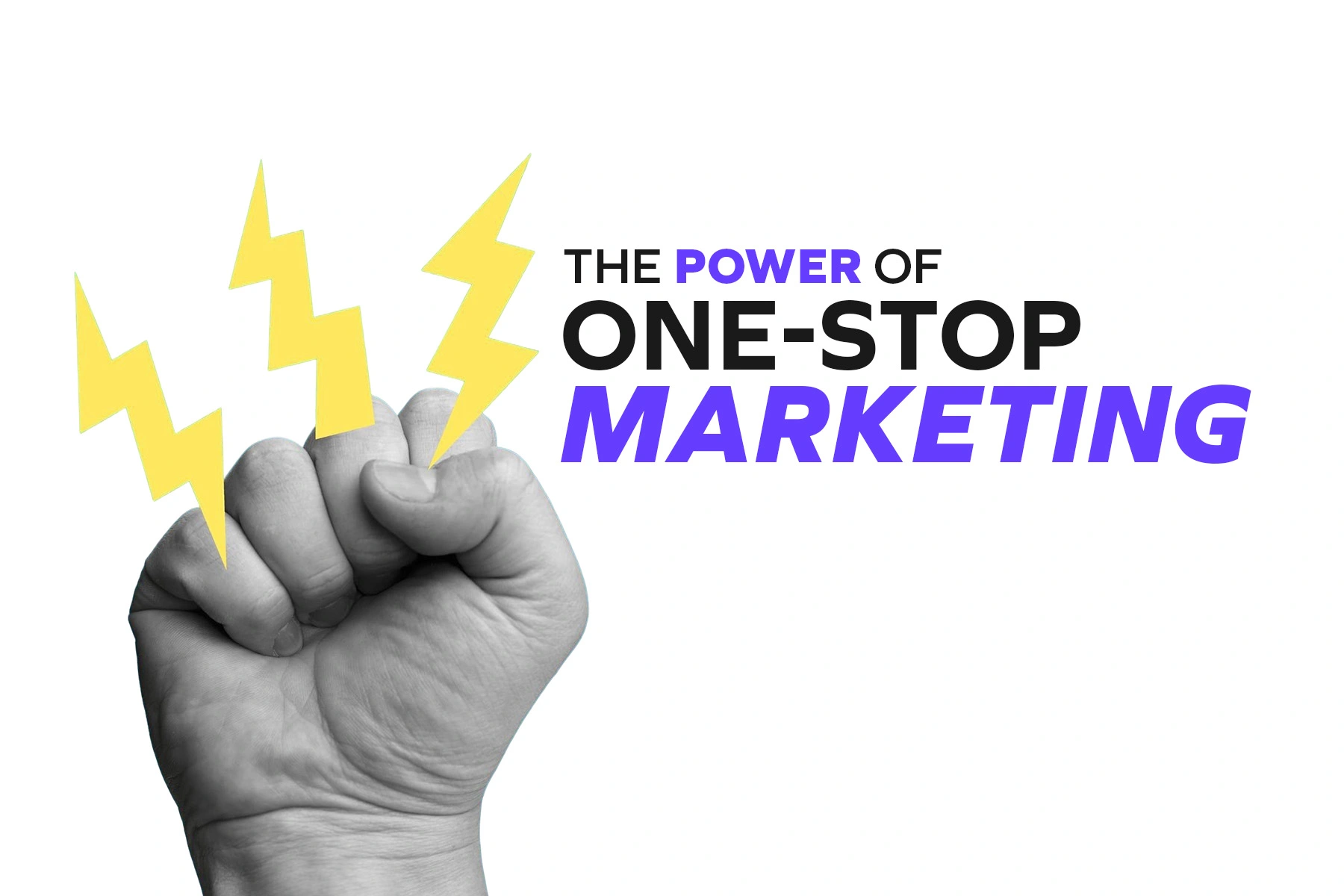Let’s be honest—DIY marketing sounds brilliant on paper.
No agency fees. Full control. You know your business best, so why not just handle the marketing yourself?
It’s a tempting pitch, especially when budgets are tight. But here’s the uncomfortable truth most business owners discover too late: DIY marketing doesn’t actually save money. In fact, it usually costs you more—sometimes a lot more.
If you’re nodding along thinking, “But I can’t afford an agency,” stick with me. Because what you really can’t afford is the hidden price tag that comes with doing it all yourself.
The Hidden Costs Nobody Talks About
When you think about marketing costs, you’re probably thinking about agency fees or ad spend. But the real expenses of DIY marketing aren’t on any invoice—they’re buried in the daily grind of running your business.
Your Time Has a Dollar Value
Every hour you spend tweaking Facebook ads, writing Instagram captions, or trying to figure out Google Analytics is an hour you’re not spending on what actually drives revenue—serving customers, closing sales, and improving your product.
Let’s say your time is worth $100 an hour. If you’re spending 10 hours a week on marketing tasks, that’s $1,000 a week. That’s $52,000 a year in opportunity cost.
Suddenly, a marketing agency doesn’t look so expensive, does it?
The Learning Curve is Expensive
Marketing platforms change constantly. Facebook’s algorithm updates. Google tweaks its ad policies. SEO best practices shift every few months.
Professional marketers stay on top of this full-time because it’s their job. You? You’re learning as you go—making mistakes, wasting ad spend, and watching budgets disappear on campaigns that don’t work.
Take a Sydney retailer who burned through $3,000 on Google Ads before realising her targeting was completely wrong. By the time she sought professional help, she’d already spent more than six months’ worth of what agency fees would have cost—all on trial and error that delivered nothing.
When “Free” Tools Actually Cost You
Sure, you can use Canva, Mailchimp’s free plan, and schedule posts manually. But free tools come with massive limitations—and those limitations hurt your results.
Free email platforms cap your sends and strip out advanced automation. Free design tools lack the polish that makes brands look professional. Free analytics give you surface-level data without the insights you need to actually improve.
You end up with marketing that looks cheap, performs poorly, and wastes the hours you’ve poured into it. That’s not saving money—that’s throwing it away slowly.
Bad Marketing is Worse Than No Marketing
Here’s the harsh reality: amateur marketing can actively damage your brand.
Poorly targeted ads annoy potential customers. Inconsistent branding makes you look unprofessional. Generic content gets ignored. And all of it chips away at the trust you’ve worked so hard to build.
Think about the last time you saw a local business with terrible social media—random posts, no clear message, engagement in single digits. Did you think, “Wow, they’re saving money”? Or did you think, “Do they even care?”
Your customers are thinking the same thing about your DIY efforts.
You’re Competing Against Professionals
While you’re figuring out how to boost a post or write an email subject line, your competitors are running sophisticated campaigns with precise targeting, A/B tested messaging, and data-backed strategies.
They’re showing up consistently, everywhere your customers are looking. They’re building email lists, retargeting website visitors, and creating content that actually converts.
And every day you spend trying to DIY is another day they’re pulling further ahead.
The Real Cost? Growth You’ll Never See
This is the part that really stings—missed opportunities.
The customers who never found you because your SEO was weak. The leads who bounced because your website messaging was unclear. The sales you lost because your follow-up emails never went out.
You can’t put a dollar figure on growth that never happened. But make no mistake—it’s the biggest cost of DIY marketing. It’s revenue that should have been yours, but went to competitors with better marketing instead.
What Actually Saves Money
If you’re thinking, “Okay, but I genuinely can’t afford a full-service agency right now,” that’s fair. Not every business is in that position. But there’s a smarter middle ground.
Start small with the things that matter most. Invest in a proper website and SEO foundation—these drive long-term results. Get professional help with paid ads so you’re not burning budget on guesswork. Outsource content creation so it’s consistent and strategic, not rushed and reactive.
You don’t need to hand over everything at once. But you do need to stop treating marketing like something you can “just figure out” between everything else on your plate.
The Bottom Line
DIY marketing feels like you’re saving money because you’re not writing a cheque to an agency. But the real costs—your time, your mistakes, your missed growth—add up fast. Usually faster than professional help would have cost you.
Marketing isn’t a hobby or a side project. It’s the engine that drives visibility, trust, and sales. When it’s done right, it pays for itself many times over. When it’s done poorly—or inconsistently—it drains resources without delivering results.
So before you convince yourself that DIY is the budget-friendly option, do the maths. Add up the hours, the wasted ad spend, the tools you’ll need, and the opportunities slipping past you.
Chances are, investing in experts isn’t the expensive option—it’s the one that actually saves you money.
Because growing your business isn’t something you can afford to get wrong.
